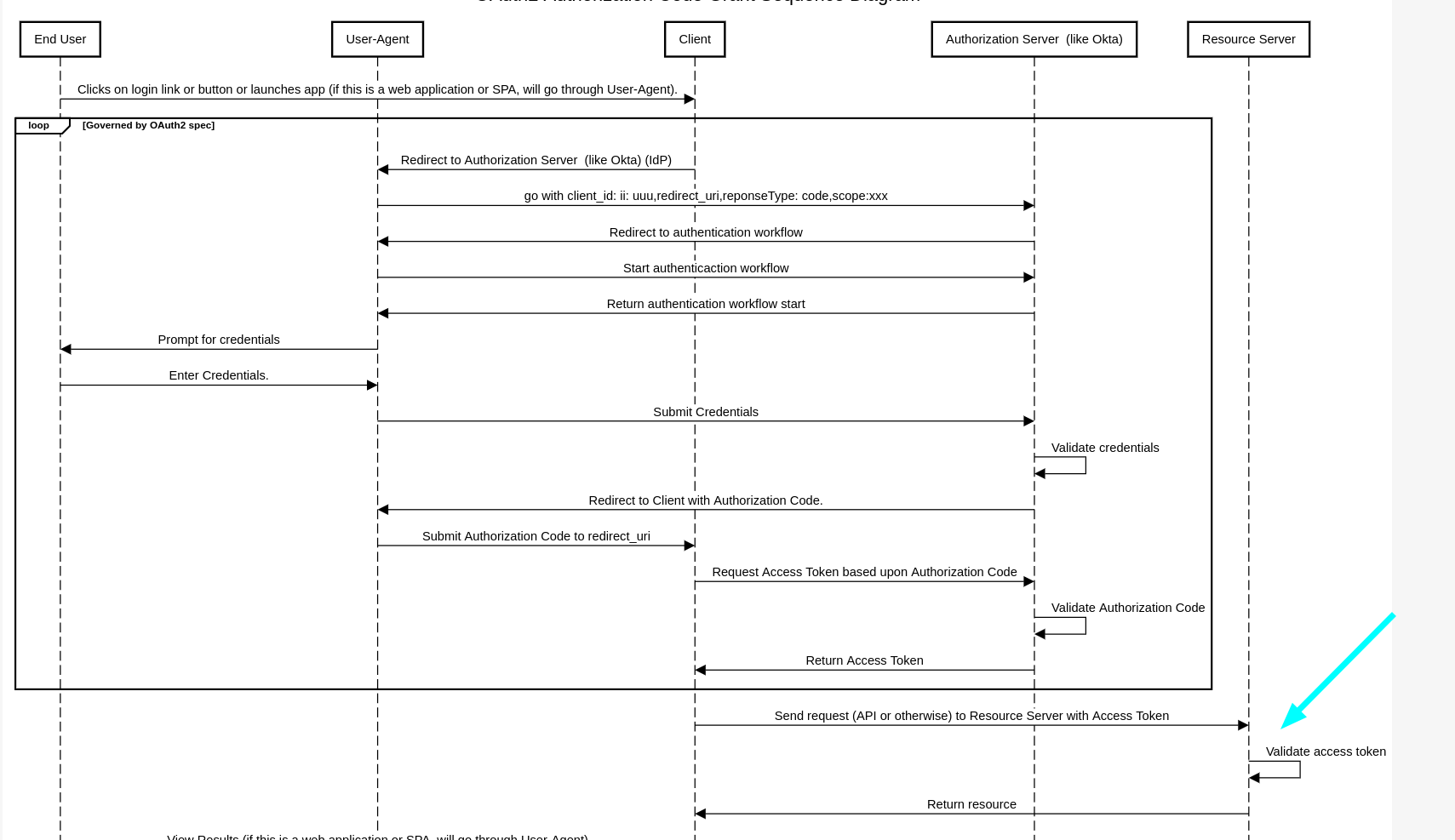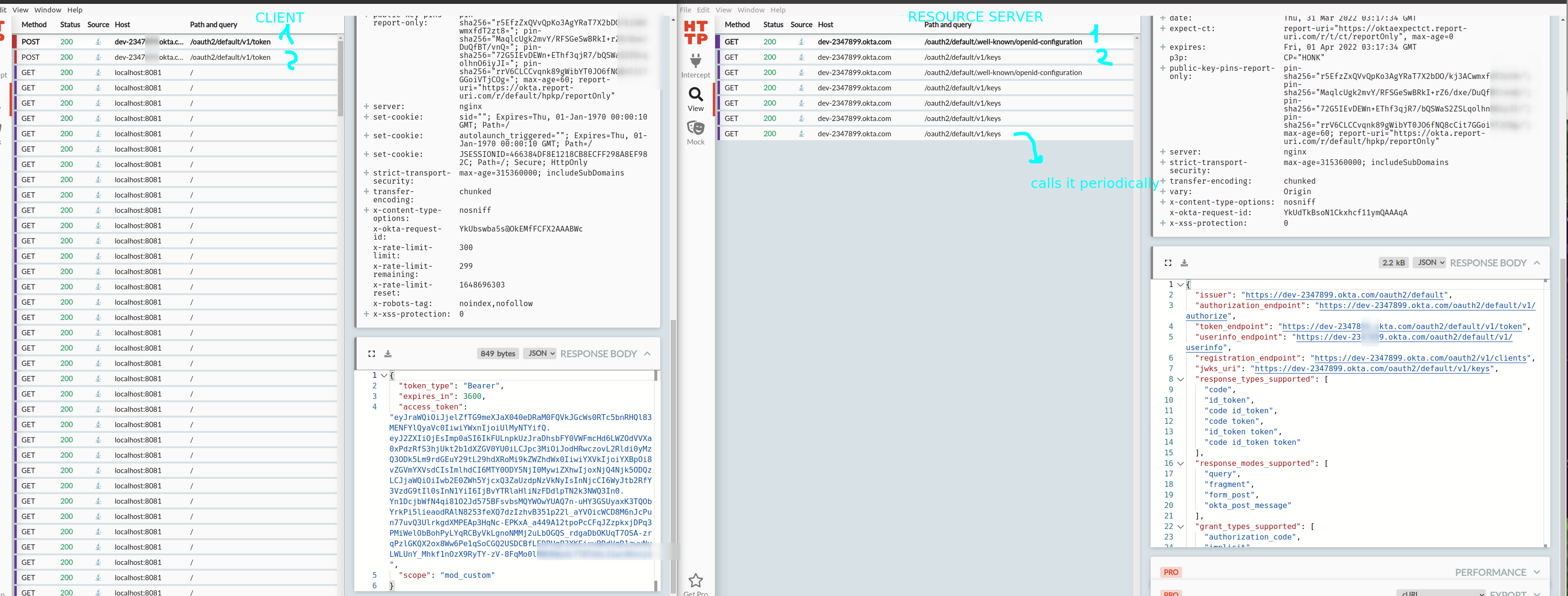There are two spring-boot apps.
clientresource-severthere is dev okta account that is used asauth server
(those 2 apps are standard Spring Boot client -> resource-server, almost out of the box with okta setup for them, should not be problem there)
client - securely sends messages to--> secure-sever (passing the access token in the header as prove that it's authorized to call it and get data back)
(it works as expected)
But I am trying to figure out what's going on between all them, traffic wise
I'm trying to spot that moment when resource-server checks the token it got from the client that got it from the auth server.
Here is a sequence diagram of standard oauth 2.0 flow and that part that I want to debug (arrow)
auth server
And there is a communications between client, resource-sever:
There seems I can not confirm that Resource Server (from the right) does any token validation with the auth-server (okta)..?
Question: is why? From my understanding it is supposed to validate it (somehow).
I was expecting to see a call from resource-server to auth-server (otka) with the token-validation-request (ETF RFC 7662 in October 2015) like this:
How to validate an OAuth 2.0 access token for a resource server?
I was expecting, lets say, tat for every client call, resource server would check if that token the client passes is valid. Yet I do not see any calls from resource service to okta that would use the token in its requests to okta.


